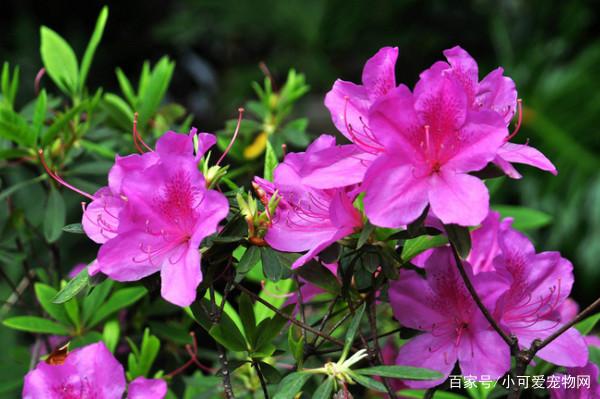Rhododendron is a popular flower among many people. So, what should be paid attention to when planting rhododendron? Rhododendron prefers fertilizer and should choose cultivation soil with moderate fertility and humus. It is important to maintain normal sunlight in spring and autumn, and pay attention to sun protection in summer. Generally, half shade is sufficient. The planting method of Rhododendron is to collect Rhododendron seeds. Due to different varieties, the seeds are also different. Generally, from October to January, the seeds can mature. The mature skin of the seeds will change from green to yellow brown, and the seeds will naturally crack and fall off. At this time, it proves that the seeds are fully mature. The seeds can be collected and stored in a low-temperature and dry place. They can be planted in March or April.

How to choose soil for azaleas? Rhododendrons prefer fertilizer, but due to weak root systems, they cannot choose planting soil with too much fertility. They are not tolerant to strong fertilizers and may cause root burning. They can choose cultivation soil with moderate fertility and humus. Choosing a suitable flower pot for planting azaleas requires a suitable pot, usually with slightly acidic soil. Then find a pot of suitable size, place the soil on it, sprinkle the seeds in the pot, maintain a moderate distance, cover with soil, and water thoroughly to allow the seeds to sprout, while keeping the environment moist. The method of planting rhododendrons on the ground requires selecting a suitable location and paying attention to shading. When sowing, the soil must be deeply turned once to allow sufficient air. A small hole should be dug on the soil surface, the seeds should be buried, and watering should be paid attention to. Rhododendrons can break through the soil in about 20 days.

The maintenance plant materials for azaleas are deer swamp, red jade, peat, perlite, with a ratio of 4:2:3:1. Mix some acidic plant specific fertilizer as the base fertilizer, and then mix some Aolv slow-release fertilizer to promote flowering. When choosing a basin, use one with a large bottom opening and good drainage, such as a green mountain basin, a global basin, or a clay basin with conditions. Wide mouthed basins with slightly shallower depths are beneficial for ventilation and drainage, while deep basins are not recommended. Maintaining normal sunlight in spring and autumn is fine, but in summer, pay attention to sun protection. Generally, half shade is enough. Trim after flowering and supplement with some liquid fertilizer, mainly nitrogen fertilizer. If you dont mind the strong smell, you can make some alum fertilizer water once a month. Stop fertilizing in summer and use phosphorus and potassium fertilizers once or twice in autumn. In winter, as long as the temperature is above minus three or four degrees Celsius, there is no problem for the Japanese. Belgian azaleas should enter indoors above zero degrees Celsius. After entering the room, be aware that red spider mites are prone to outbreaks and spray avermectin to prevent them.

After the emergence of new leaves in summer and autumn, it is easy to break out of reticulated stink bugs, small black flies, red spider mites, and other similar insects. Imidacloprid is used every two weeks to prevent them. Belgian azaleas are prone to death in the summer, so be careful not to lack water but not to accumulate water in the pot. Japanese plants are relatively sturdy, and a little shade in summer can help them survive. On the market, azaleas are generally dominated by Belgian cuckoos, and pure peat is used as the plant material. This material has good water absorption effect, but it is not easy to be full when lacking water. You can consider whether to replace the soil at your discretion.





